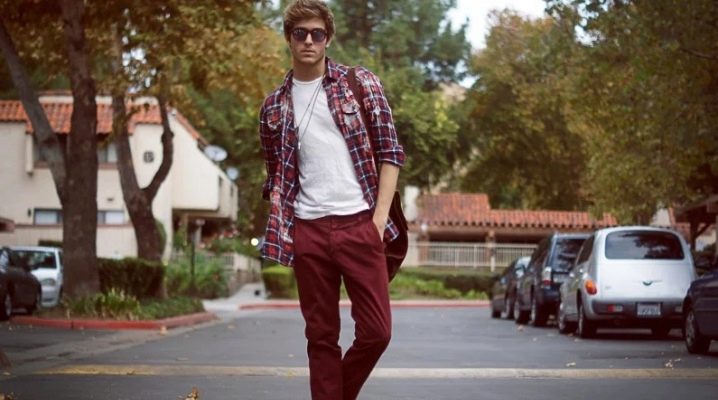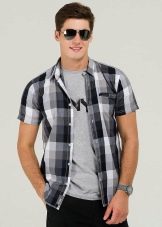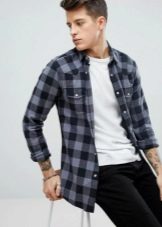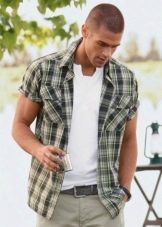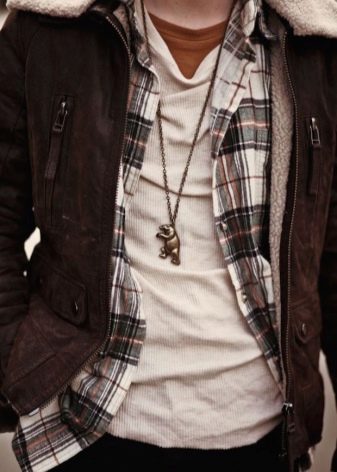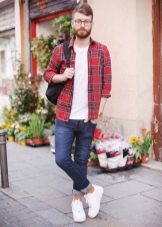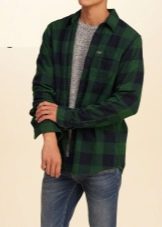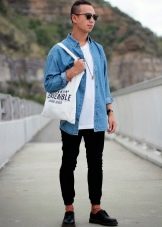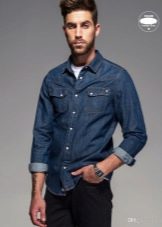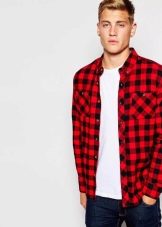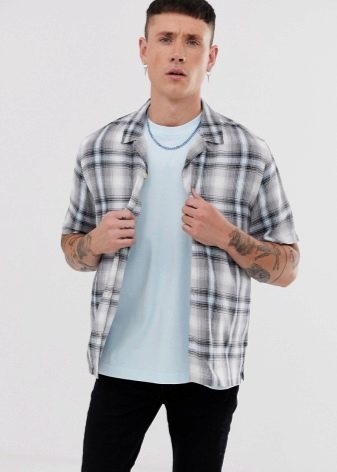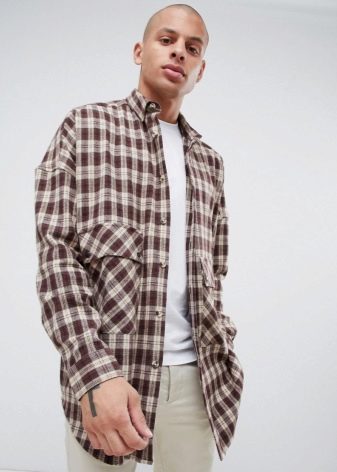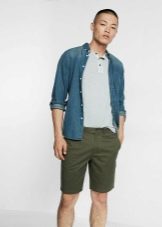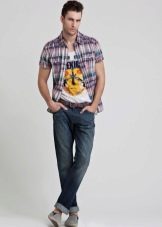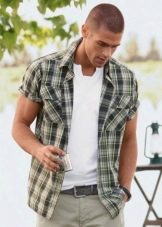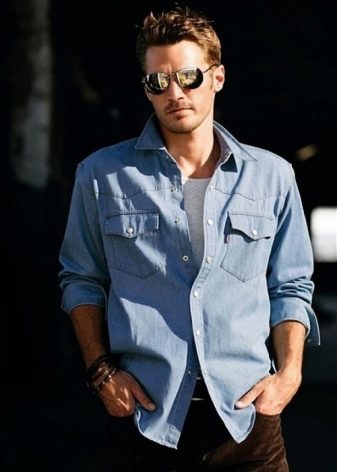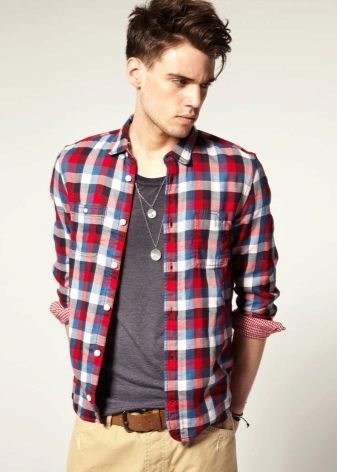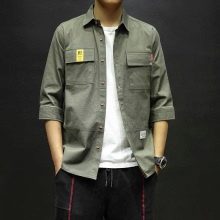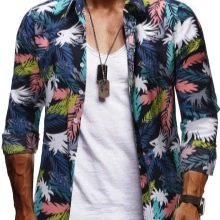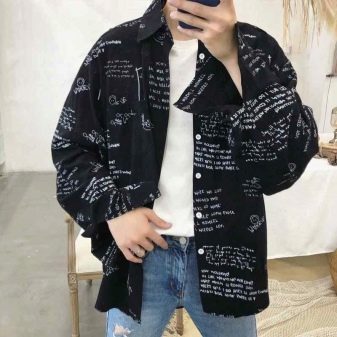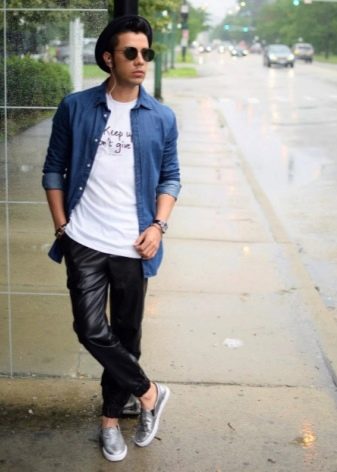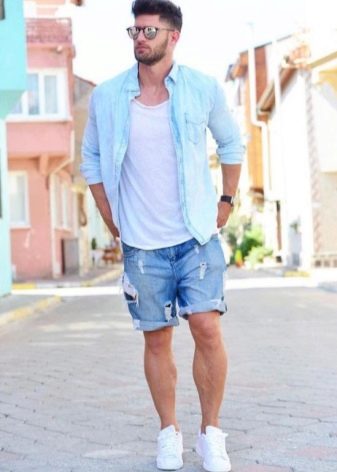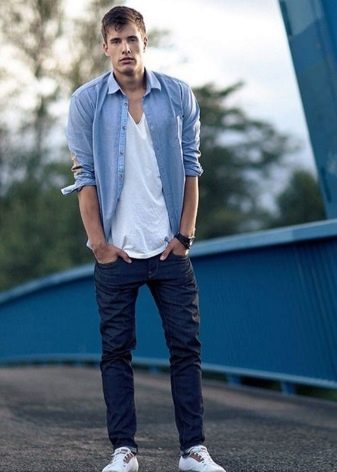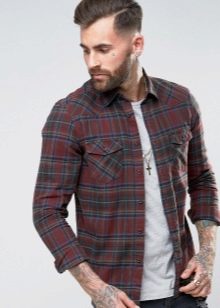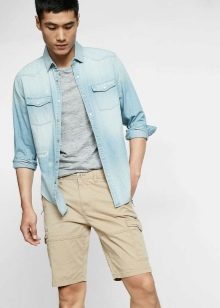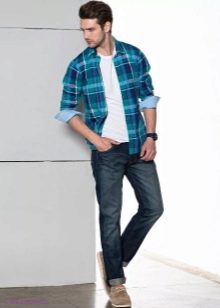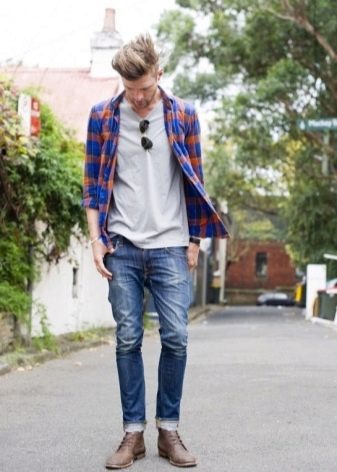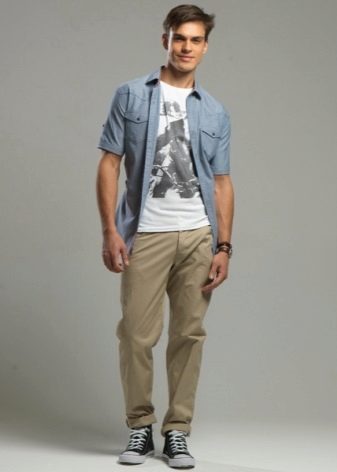How to wear a shirt with a T-shirt for men?
Almost every man's wardrobe has T-shirts and shirts. However, not all of them combine these elements in one image, and in vain. A shirt worn over a T-shirt is a comfortable and practical option that has many benefits. The main thing is to know some of the nuances of the combination and not be afraid to experiment.
Peculiarities
The simultaneous wearing of the above two wardrobe items is suitable for men of any age. Of course, this is not an office style of clothing, but it is quite possible to go for a walk or a date. However, you can also wear a shirt with a T-shirt to study or work if there is no strict dress code.
The fashion for such images originally appeared in the boho style. Layering in this style performs not a practical, but an aesthetic function. As a result, the effect of ease is created. The man seemed to have thrown over himself the first thing that came to hand. At the same time, such outfits look very harmonious.
Today, layering is welcome and casual style... Besides aesthetics, there is also functionality. A thick denim or flannel shirt will warm you on a cool summer evening. If it gets hot, the person can take it off and stay in the T-shirt. In case of changeable weather (for example, windy but warm days), you can simply open or roll up your sleeves.
There is one more point here that is important for fashionistas. In addition to the very fact of layering, the combination of the two considered elements of clothing gives an additional opportunity to combine various shades, prints, textures. By changing one of the parts, you will receive all the new images. Depending on the chosen colors of clothing, you can look bright or modest, create romantic, strict or relaxed bows.
Fundamental rules
When combining layers, you should adhere to some basic rules. Only in this case, the male image will turn out to be harmonious.
- The thickness of the layers. The thickness of the fabric of each new layer should be either the same as that of the previous one, or more. In other words, the denser the T-shirt you choose, the thicker the shirt should be (flannel, denim and other models differ the highest density indicators). If the shirt is made of lightweight fabric, then you should not wear a thick T-shirt under it.
In this case, it is better to choose a product from the thinnest possible knitwear.
- The volume of things. The top layer should have a looser fit than the bottom. If you put on an oversized jersey under a fitted shirt, the image will turn out to be too casual. Extra folds will spoil the silhouette, and the clothes will seem untidy. In this case, choose a tight-fitting T-shirt. If the shirt has a chunky cut, the shirt can also be loose.
- Self-sufficiency of all elements. You should always be prepared for the top of the bow to have to be removed, for example, if it gets hot outside. Therefore, in no case put things under the shirt with stains or other defects. The bottom layer should be in excellent condition (not wrinkled, not torn). Also, it should be harmoniously combined with other elements of the image (jeans, trousers, shorts, shoes).
You can wear a shirt with a T-shirt in different ways. You can zip up the outer layer, leaving only a couple of buttons unbuttoned, or you can unbutton the shirt completely. Most often, the upper part is worn out. However, if you wish, you can tuck both things into your trousers. Also today, many tuck the upper part of the outfit unevenly (half or one third).This creates the effect of slight casualness, fashionable in recent seasons. As for the sleeves, they can be rolled up or left long (depending on weather conditions and personal taste).
The nuances of selecting items
Let's take a look at how to choose both wardrobe items.
Shirt
It should be noted that classic shirts that are worn with business suits are not suitable for such combinations. The best options are casual items. Cotton and flannel checked models are great for such combinations. Jeans are a good complement to T-shirts. Models made of rough safari-style fabric are suitable for connoisseurs of brutality. Shirts with trendy prints help create shocking bows.
Variants with various inscriptions are interesting. If you are creating a light summer look, you can also wear a completely monochromatic product as a second layer. But in this case, it is better to roll up the sleeves (if they are long) and casually unbutton the product so that the clothes do not look formal.
The shirt can have both buttons and buttons. The sleeve can be short or long. The collar and cuffs can be made from the same fabric as the main body of the garment or have a contrasting shade.
T-shirt
When choosing a T-shirt, it is worth excluding polo models. Products with a collar do not fit into such images at all. As for the neckline, it can be anything. Both round and V-shape are allowed. Sleeve length may also vary. If it's cool outside, a long-sleeved shirt (long-sleeved T-shirt) can perform the function of the bottom layer. But the Henley models (with buttons or buttons at the neck) are better to put aside. In this case, they are also inappropriate.
As for prints, they are allowed. The main thing is to maintain a balance between the colors of the shirt and the bottom layer. Otherwise, you can get a tasteless and too variegated image.
Other elements
As already mentioned, a t-shirt and shirt combination is a casual, informal option. Such clothes should not be worn with classic trousers and formal shoes. But with jeans, these things look great. You can complete the look with sneakers, sneakers or casual boots. Chino pants are another comfortable and stylish option. If it's hot outside, you can wear shorts (not sports, of course). In this case, you can put on your feet, for example, slip-ons.
Color combinations
Both layers must match in color. A universal option is a plain white T-shirt. You can wear absolutely any shirt with it. A light shade of gray can also be called neutral and combined with any other tones.
If different colors are chosen, then the bottom layer should be lighter than the top one. Such combinations look more harmonious. If the shirt color includes several shades, the color of the T-shirt can be matched to one of them.
It is better to combine bright shades with calm ones. The same goes for prints. A plain shirt can be combined with a printed knitted inner layer. If the top layer has a pattern (for example, a cage), it is better to give preference to a T-shirt without inscriptions and other decor.
